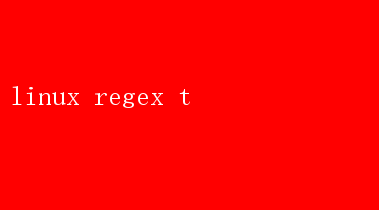
Linux Regex: The Powerful Tool for Text Manipulation
In the vast universe of computer operating systems, Linux stands as a towering figure known for its versatility, robustness, and community support. Among the myriad of tools and utilities Linux offers, regularexpressions (regex) are indispensable for anyone involved in text manipulation or data processing. This article will delve into the intricacies of Linux regex, explaining why it is a must-know skill for developers, system administrators, and anyone who deals with textual data on a regular basis. Well explore its basic syntax, practical use cases, and advanced tips, ultimately demonstrating why regex is a cornerstone of efficient and powerful text processing in Linux.
Understanding Regular Expressions
At its core, a regularexpression (regex) is a pattern used to match character combinations in text. Its a sequence of characters that define a search pattern, primarily used for text searching, editing, or manipulation. Regex isnt unique to Linux; its a concept that transcends operating systems, implemented in various programming languages and text editors. However, Linux, with its robust command-line toolslike `grep`,`sed`, and`awk`, offers an especially powerful environment for regex usage.
Linux regex syntax is based on the POSIX(Portable Operating SystemInterface) standard, ensuring consistency across different Unix-like systems. The beauty of regex lies in its ability to handle complex patterns with a compact and expressive notation. By learning regex, you unlock the potential to perform intricate text manipulations with just a few keystrokes.
Basic Syntax and Components
Before diving into advanced use cases, lets review the fundamental components of Linux regex:
1.Literal Characters: These are characters that match themselves. For example, the regex`a` matches the character`a`.
2.Metacharacters: Special characters that have a unique meaning in regex. Common metacharacters include:
-.: Matches any single character except newline.
-`^`: Matches the start of a line.
-$: Matches the end of a line.
-: Matches zero or more occurrences of the preceding element.
-`+`: Matches one or more occurrences of the preceding element(not P
